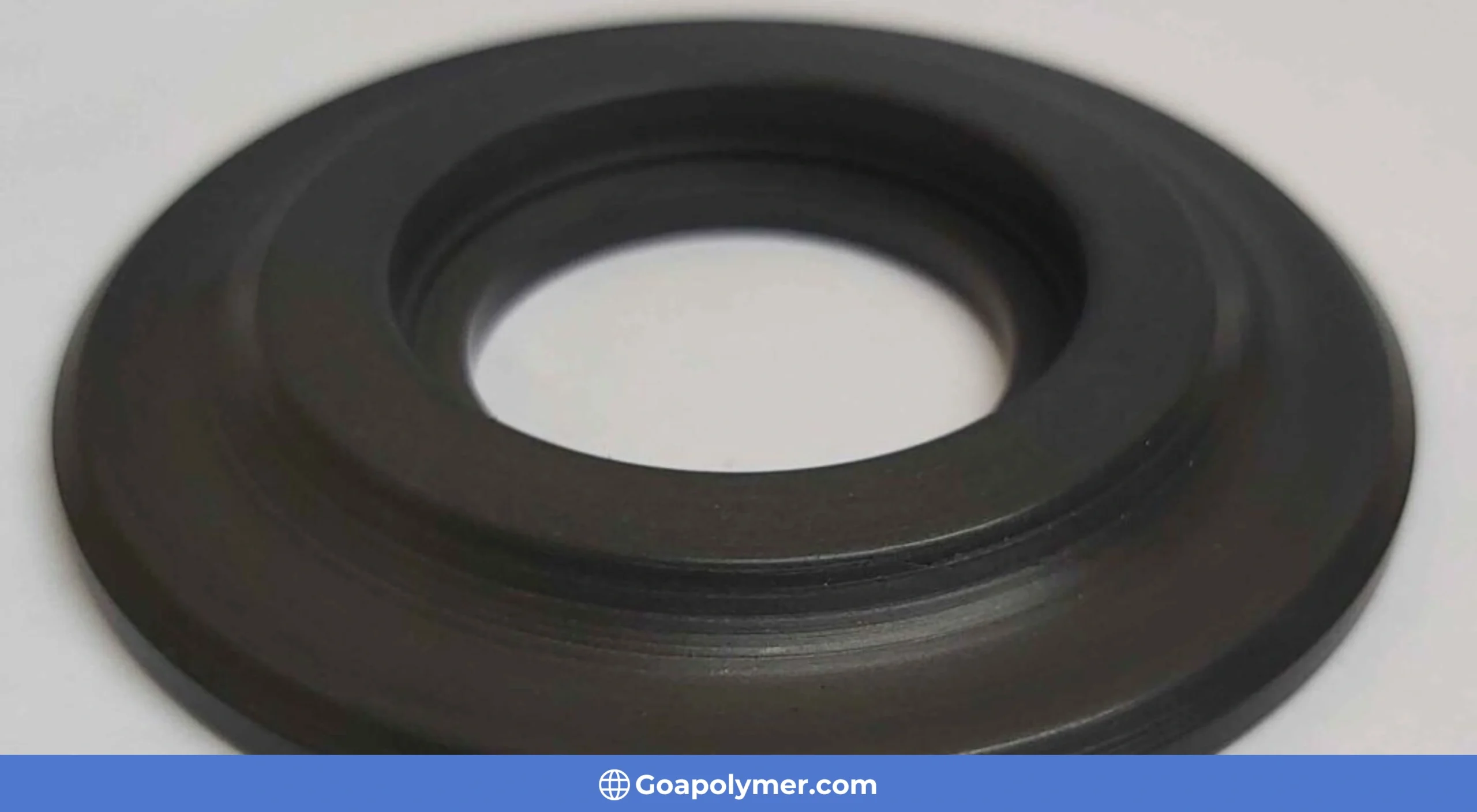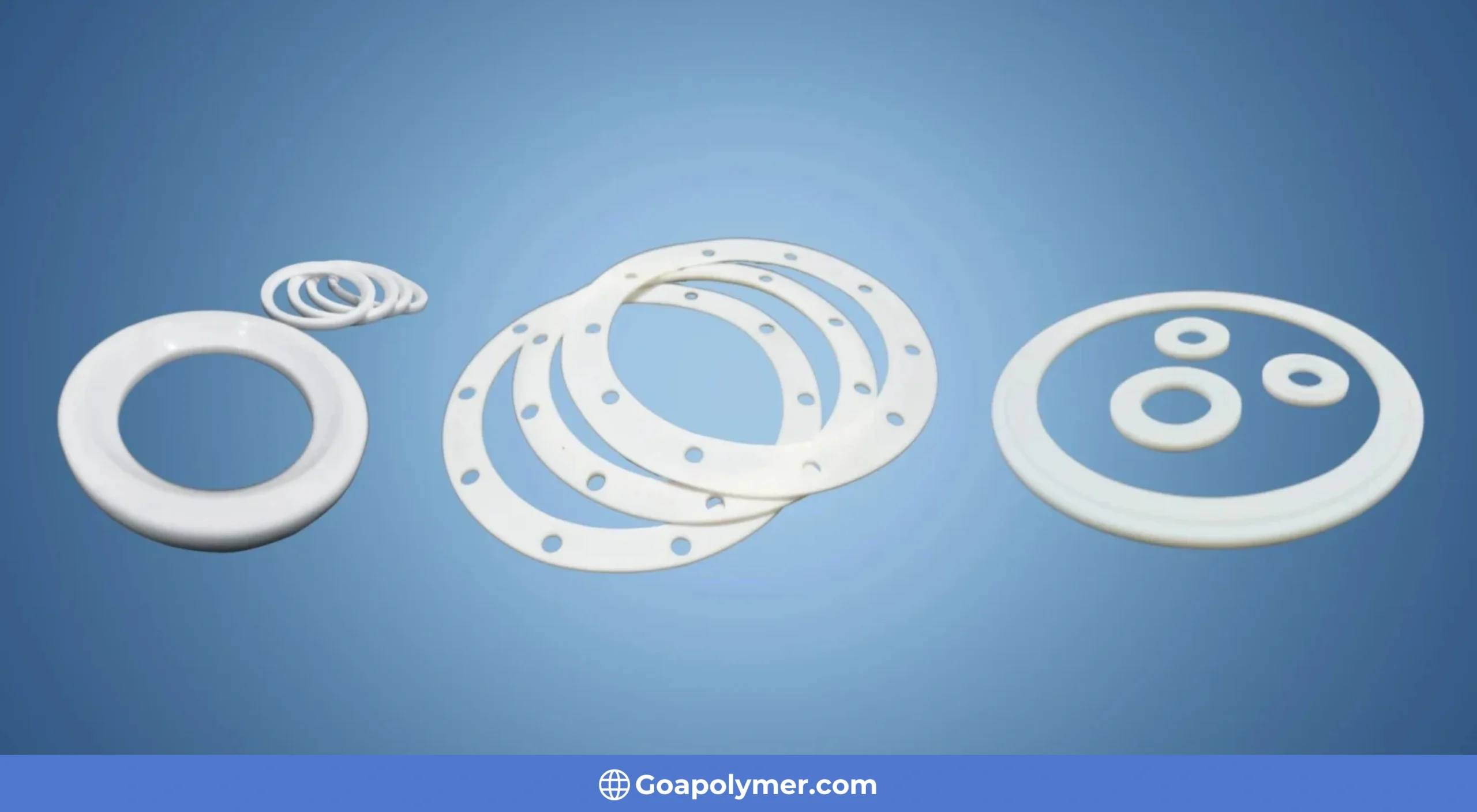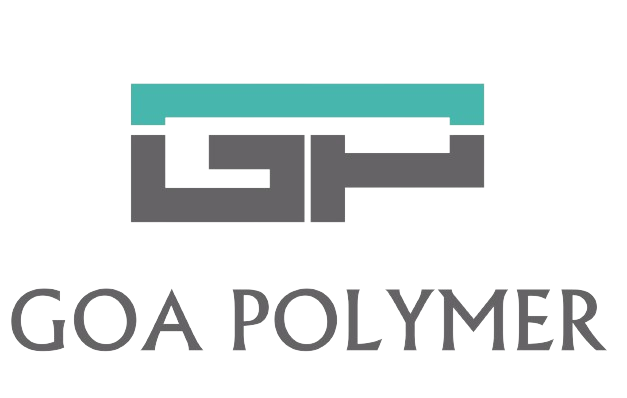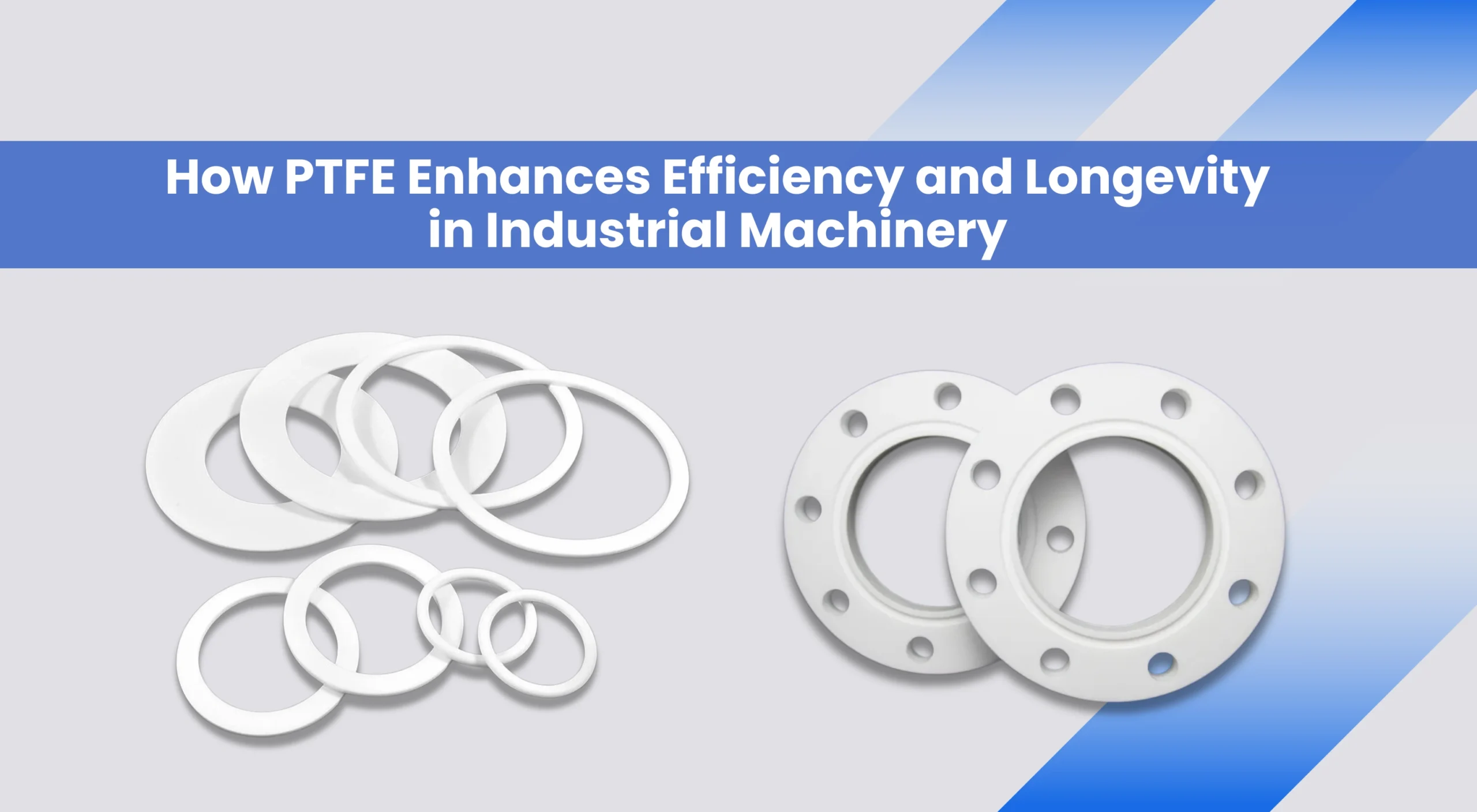Industrial machinery serves as the foundation for all modern industrial operations. Large factories and small workshops operate machines throughout each day. Industries require materials that can endure strong pressure alongside high temperatures and continuous friction. PTFE stands as a commonly accepted material for industrial applications. The non-stick nature, combined with the friction properties of this material, extends machine durability and enhances operational performance.
Manufacturing, maintenance, and engineering teams should know that PTFE boosts productivity. It also helps industrial equipment last longer. When machinery runs well, it wastes less energy. The components work together without interruption, which leads to shorter periods of operational inactivity. In this blog, we’ll explore how PTFE Gasket boosts machinery efficiency and lifespan.
What is PTFE and Why is it Special
PTFE is a synthetic fluoropolymer known for its non-stick surface. It can also handle extreme temperatures well. It is used in many ways, such as cookware, seals, bearings, gaskets, and other machine parts. Characteristics that make PTFE unique include:
- Exceptional heat and cold resistance.
- Non-stick surfaces and low friction.
- Superior chemical resistance.
- Effective wear resistance and durability.
Most of these traits, with a few exceptions, make machine parts ideal for PTFE. They work well under tough conditions and last a long time.

How PTFE Improves Efficiency in Industrial Machinery
Modern machines have gained large advantages from the widespread use of PTFE. Thanks to it, they achieve a significant reduction in friction and enhance performance. In this section, we will discuss the benefits of PTFE. We’ll also explain how it makes machines more efficient.
Reducing Friction
The loss of efficiency in machines is largely due to friction. Among solid materials, PTFE exhibits one of the lowest friction coefficients. So, machine parts made from or coated with PTFE can slide easily with little friction.
The consequent benefits include the following:
- Reduced energy loss during movement.
- Lower operating temperatures of components.
- The quieter machine is functioning.
- Enhancing Lubrication
A machine operates flawlessly when it receives proper lubrication as part of its operational condition. Friction-stirring materials, such as PTFE (polytetrafluoroethylene), work to minimize friction. The absence of extra lubrication requirements from these materials results in better friction reduction. The sliding machine parts glide easily over each other. This is a smooth PTFE surface.
The effects of this friction reduction include:
- Reduced Maintenance: Machines operate longer with less cost and time without needing re-lubrication.
- Cleaner Operations: Without friction stirrers, there’s less need for oils. The reduction of mess and contamination happens through this process.
- Reliable Performance: PTFE delivers dependable performance when subjected to substantial load forces across multiple temperature ranges. It ensures smooth operation and reduces the chance of sudden failure.
- Handling Extreme Conditions
PTFE stands out in extreme cold, intense heat, or strong chemicals. PTFE holds its physical structure better than other materials. This quality makes it very valuable. PTFE seals, gaskets, and coatings protect machines, even against strong chemicals.
PTFE works well in extreme conditions for the following reasons:
- Consistent Functionality: This device maintains its operational efficiency through both high-temperature and low-temperature conditions.
- Corrosion Protection: The system protects against both moisture and chemical elements that cause damage.
- Assured Safety: System safety is guaranteed through this method, which lowers the risk of unexpected pressure-related system failures.
- Improving Energy Efficiency
Energy consumption is the main expense of industrial machinery. Frequent stops can disrupt operations. PTFE helps machinery parts move smoothly. This makes operations more efficient and uses less energy.
Ways PTFE improves energy efficiency include:
- Decreased Frictional Losses: Polished surfaces provide effortless movement of components.
- Diminished Heat Generation: The generation of heat through friction acts as a major heat source, and when friction decreases, so does the heat output.
- Reduced Energy Usage: The ability to complete identical work tasks while requiring fewer resources proves efficiency.
- Maintaining Sustainability: Efficiency improvements lead to reduced fuel and electricity consumption, thereby supporting sustainability goals.
- Ensuring Consistent Performance Across Applications
Machinery equipment is found in many places. You can see it in refinement facilities, auto shops, aerospace sectors, and food and chemical factories. Each one of these works comes with its own set of issues; PTFE functions without any problems.
PTFE maintains steady performance with the following key features:
- Stable Properties Over Time: Maintains its traits, so it delivers reliable performance for years.
- Wide Temperature Range: The device functions effectively during both hot and cold temperature extremes.
- Chemical Resistance: The material sustains its structure when chemicals such as acids, fuels, and solvents come into contact with it.

How PTFE Extends the Longevity of Machines
Longevity means how long machines operate without serious damage or needing part replacements. PTFE helps in a myriad of ways to increase a machine’s durability.
- Wear Resistance: Carbon and glass-filled PTFE are well known for their great wear resistance.
- Corrosion Protection: Various metals undergo corrosion through contact with moisture, together with chemicals and different compounds. PTFE coating creates a protective layer. The protective layer functions to block corrosion and protect machine components from developing rust. This protection extends the life of the components.
- Lower Maintenance Costs: PTFE reduces repair and replacement costs. This financial advantage makes PTFE a sensible choice for industrial machinery.
- Minimizing Replacement Frequency: PTFE parts last much longer than regular materials. The protective coating extends the interval between component replacements. The protection system cuts down downtime, which enables continuous machine operation.
- Reliable Operation Over Time: PTFE remains reliable in industrial settings even after extended use under harsh conditions. The equipment operates with high reliability because the chance of unexpected breakdowns decreases.
Common Uses of PTFE in Industrial Machinery
PTFE is a diverse material that can be utilized in various machinery in industries. Some of these include:
- Seals and Gaskets: Stop the leakage of gases and liquids in pumps and pipes.
- Bearings and Bushes: Bearings and bushes work to minimize friction and component wear during movement operations.
- Thrust Pads: The device maintains continuous motion and supports substantial weight handling requirements.
- Insulation Materials: The protection system safeguards machinery components from heat buildup and electrical dangers.
- Coatings: Metal components receive protective coatings that prevent sticking and corrosion.
Conclusion
Industrial machine components depend on their materials. This affects both how well they work and how efficient production is—the material PTFE functions as a self-lubricating and corrosion-protective agent. The material reduces both friction and wear while operating under heavy load conditions. Industrial machinery performance improves while its operational lifespan extends when efficiency rises. These materials perform well in very hot conditions. They also resist strong corrosive substances. The implementation of PTFE in industrial operations leads to a decrease in equipment failures. The material cuts maintenance costs and boosts equipment operating time. The material boosts energy efficiency. PTFE, combined with advanced technology, enables industries to achieve efficient operations with the support of Goa Polymer.



